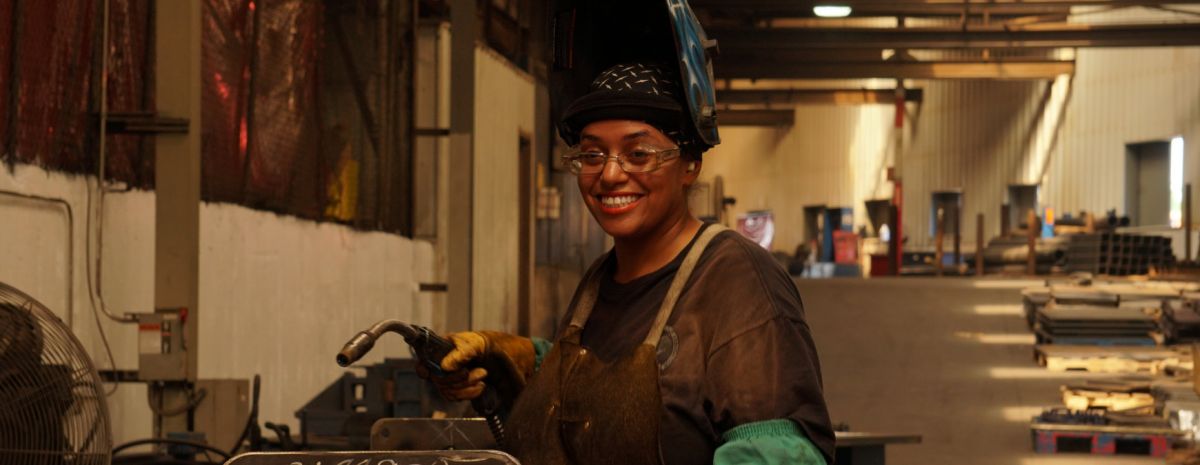TWS is a Great Training Option for Everyone
Learn more about how we can prepare you to advance your career.
A recent survey found that more than half of workers in the U.S. are not happy with their jobs.1
Why? Several factors can contribute to career dissatisfaction: whether it’s the hours you work, the pay, the people or just what you must do while you’re there.2
If you feel like you’re stuck and you need a career change, you may find the following tips helpful when choosing a new path.
8 Common Reasons Why People Change Careers
Whether you started out happy with your career choice and your circumstances changed, or it wasn’t a good fit from the start, you’re not alone.
Have You Considered a Career in the Skilled Trades?
Fill out the form to recieve a no obligation info packet.
Many workers report dissatisfaction with their jobs.1 And every working adult can have different reasons for needing a career change. While 47% of people change careers because of money or pay, there are a lot of other reasons why workers make the switch:3
- Interest in a new line of work and lack of passion for the current field.
- A need for more flexibility in their schedule and a greater work-life balance.
- The position is too stressful.
- The job isn’t challenging enough.
- A dislike for management or boss, co-workers or simply the type of work.
- Boredom.
- Following a dream of doing something else.
- Dislike of the career location.2,3
4 Tips to Help with Making a Career Change
Making a career change can be a big decision and one that most won’t take lightly. Here are 4 tips to help you make an informed decision about which path to pursue.
1. Ask Yourself Why You Want a Career Change
Before making a career change, you should know why you want a change. Make a list of the things about your current or most recent job that you didn’t like, as well as the things you liked.4
For example, maybe you worked in a factory and enjoyed interacting with people and using tools but hated the hours. This insight can show you some of the things you should be looking for in a new career path.4
2. Assess Your Skills and Interests
Any time you are changing careers, it can be good to take inventory of your skills and interests. Take a look at roles you’ve filled in the past and determine what interested you the most:

New: Industrial Maintenance
Learn About Our New Advanced Industrial Maintenance Program in Houston
Tulsa Welding School is proud to announce our newest program offering available at our Houston Campus – Advanced Industrial Maintenance Technology! Learn the skills you need to take on the industries of manufacturing, distribution, energy production and facility maintenance in as few as 7 months.
- Job roles
- Projects you tackled on your own
- Some kind of volunteer work3
Figure out how, if at all, your skills and interests are put to use in the job role you’re in and what potential career fields could serve them best.3
3. Research New Career Possibilities

Research new career possibilities that might suit your interests and skills. Check the occupational data associated with different fields on the U.S. Bureau of Labor Statistics website. Careers that have healthy job growth projections could be good options because these fields may have job openings in the coming years.4
For example, some skilled trades have healthy growth projections between 2018 and 2028:
- HVAC Technicians: 13% job growth rate5
- Plumbers, Pipefitters, and Steamfitters: 14% projected job growth rate6
- Electricians: 10% job growth rate7
4. Consider Taking Career Training
Taking a class or upgrading your skills can be steps in the career change process.3 The new career you want may require earning a professional certificate or learning specific skills. The good news is, there are many career options that don’t require spending years in college earning a degree.4
This can be the case with vocations and skilled trades. For example, the Professional Welding program at Tulsa welding School can take a little as 7 months to complete.
Consider Changing Careers into the Skilled Trades
The average working adult will change their career as many as five to seven times over the course of their life.8 In one study, individuals with a professional diploma were some of the least likely to have changed careers in the prior year.2
Where can you earn a professional diploma? Many vocational schools and trade schools award diplomas or certificates. Their programs can usually be completed in less than two years, which can be helpful if you don’t want to spend four or more years in college in order to change careers.9
If you’re interested in this route, consider these 5 tips for a successful career change into the skilled trades.
1https://www.forbes.com/sites/jackkelly/2019/10/25/more-than-half-of-us-workers-are-unhappy-in-their-jobs-heres-why-and-what-needs-to-be-done-now/#67efa8532024
2https://www.joblist.com/trends/midlife-career-crisis
3https://www.thebalancecareers.com/successful-career-change-2058452
4https://www.bls.gov/careeroutlook/2017/article/new-career.htm
5https://www.bls.gov/OOH/installation-maintenance-and-repair/heating-air-conditioning-and-refrigeration-mechanics-and-installers.htm
6https://www.bls.gov/OOH/construction-and-extraction/plumbers-pipefitters-and-steamfitters.htm
7https://www.bls.gov/OOH/construction-and-extraction/electricians.htm
8https://careers-advice-online.com/career-change-statistics.html#:~:text=The%20average%20person%20will%20change,according%20to%20career%20change%20statistics
9https://www.bls.gov/careeroutlook/2015/article/career-planning-for-high-schoolers.htm
This blog has been labeled as archived as it may no longer contain the most up-to-date data. For a list of all current blog posts, please visit our blog homepage at https://www.tws.edu/blog/







